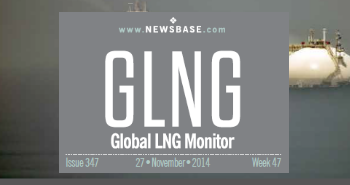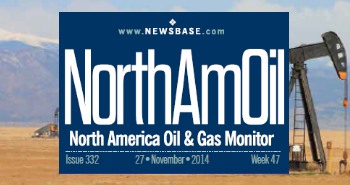Pantheon spells out hopes for Alaskan oil assets

Pantheon Resources is optimistic that it is in the right place at the right time as it sets out plans to develop its oil acreage in Alaska
What: Pantheon Resources is optimistic about the potential of its Alaskan oil assets.
Why: The company is conducting a flow testing programme at its Megrez-1 discovery.
What next: Pantheon is also hoping to benefit from new momentum for Alaska’s oil and gas industry.
Independent Pantheon Resources is optimistic over the potential of its oil assets in Alaska. The company’s expectations are based on a combination of factors including promising early results from exploration drilling and previous successful flow tests on its acreage, which it hopes to confirm in the near term with further flow testing. Other factors include an increasingly favourable regulatory environment, advantages related to location and broader trends playing out across the US oil and gas industry.
Indeed, Pantheon’s Alaskan push comes as the shale industry in the Lower 48 states, to which independents were previously flocking, becomes increasingly mature and consolidated among a shrinking handful of major players. And as top-tier shale availability declines and producers have to look elsewhere, Alaska could be well-positioned to benefit despite the perception that it is a challenging place to work.
Acreage and plans
Pantheon’s position in Alaska consists of 258,000 acres (1,044 square km) on the North Slope, south of the prolific Prudhoe Bay and Kuparuk oilfields. The company holds a 100% working interest in the acreage, where its primary assets are the Kodiak and Ahpun oilfields.
In December, Pantheon announced a discovery with the Megrez-1 well in the eastern topsets of the Ahpun field. The well intersected seven horizons, finding 1,340 feet (408 metres) of net pay. In March, Pantheon kicked off a flow testing programme at Megrez.
“Over the next 12-16 weeks, we're going to give flow test results to the market, and rather than wait around for 16 weeks for all the tests to be complete … we're going to release the results after each interval,” Pantheon’s CEO, Max Easley, told NewsBase.
Pantheon released an update on its flow testing progress on April 14, saying Megrez-1 had been fracture stimulated in the first and deepest of six test intervals, Topset 1 (TS1). While the flow test produced no appreciable hydrocarbons, the company reported that the technical data gathered increases confidence in the productivity and hydrocarbon potential of the intervals higher in the wellbore and indicates mobile oil will be found in the shallower stratigraphic sequences. The TS1 interval produced at sustained liquid flow rates that remained at over 1,000 bpd at the end of 12 days of flow testing. The testing programme will immediately move to the next of five remaining test intervals.
Ahpun is comprised of a series of deltaic topset horizons that contain the main resource in the field, as well as the smaller, deeper Alkaid Zone. Kodiak, meanwhile, consists of a basin floor fan that partially underlies Ahpun and is expected to benefit from Ahpun’s infrastructure further down the line.
Pantheon estimates the contingent and prospective resources across the acreage to total 2.2bn barrels of marketable liquids, and Kodiak accounts for 1.2bn barrels of this.
“There's a couple of significant penetrations in [Kodiak], it was tested and confirmed the hydrocarbons are there,” Easley said. “We want to drill another well in due course,” he continued. “This well won't inform any development decisions in the near term, but it will be an important test and delineation of the quality of the resource.”
Tailwinds
These efforts come amid expectations that Alaska’s oil industry is on the up and that Pantheon is well-positioned to benefit.
“When people think about Alaska, they think about three things,” Easley said of the main factors that are frequently cited as obstacles to development in Alaska. “It's cold – yes, that is true. The second one is that infrastructure is really expensive – that can be true, depending on where your assets are,” he continued. “The third thing they think about is the tough regulatory environment – it’s hard to operate there. There certainly have been headwinds for operators over the past few decades, but all those headwinds have now turned into tailwinds.”
Easley cited support from both US President Donald Trump – who wasted no time in confirming his support for accelerating Alaska’s energy development upon taking office again in January – but also at the state level. This comes after a Pantheon subsidiary entered into a gas sales precedent agreement (GSPA) with a subsidiary of state-owned Alaska Gasline Development Corp. (AGDC) relating to the proposed Alaska LNG project. The first phase of Alaska LNG would be a gas pipeline from the state’s North Slope to South-Central Alaska, and meeting local gas demand aligns Pantheon with the state’s goals, according to Easley.
As far as infrastructure goes, Easley said Pantheon benefits from having both the Dalton Highway and the Trans Alaska Pipeline System (TAPS) run through its acreage. In addition, the planned pipeline associated with Alaska LNG would also run through Pantheon’s acreage.
The GSPA paves the way for Pantheon to have an outlet for its associated gas production, though Easley noted that while this was an advantage, it was not essential to the company’s plans.
“Our acreage is oil-driven … but there is a lot of associated gas,” he said. “We don't require gas export for this to be viable but it certainly helps because if we don't sell the gas, we have to reinject the gas.”
Nonetheless, recent momentum for Alaska LNG comes as a boost to Pantheon. On March 28, it was announced that AGDC had signed definitive agreements for an affiliate of privately held Glenfarne Group to become the majority owner and lead developer of Alaska LNG. Pantheon’s chief commercial officer, Pat Galvin, described this as a “big inflection point” for Alaska LNG, whose first phase is now expected to reach a final investment decision (FID) more quickly, perhaps in the next couple of years.
“That timing lines up very well with our project, because we'll be approaching our FID on our first Ahpun development project right around that same timeframe and so we can get some very good alignment between our timeline and the gas pipeline project,” Galvin told NewsBase. “But for us, I think one of the key takeaways is that the gas pipeline project would be a nice add-on, but it's not a critical path for our project,” he added, echoing Easley.
There is also a longer-term opportunity for Pantheon as Kodiak is located on top of the Highly Radioactive Zone-East Segment (HRZ-ES) and is generating helium in its associated gas as a result.
“Based on our sampling, it's between 0.5-2.0% helium, the gas, so that resource alone is worth more than our natural gas,” Easley said. “Getting that to market in due course would be a really nice value addition to this acreage, which is a unique feature of Kodiak, and if you do the maths at full-scale development of Kodiak, Pantheon may well be one of the biggest helium producers in the world, in a growing market,” he added.
Unconventional and conventional
Pantheon has both tight and conventional formations among its assets, and the tight ones would be developed using the sort of unconventional techniques that have been honed in shale formations in recent years. However, Easley said Pantheon expected the reservoir properties to be “several orders of magnitude better”.
The conventional reservoirs – if they are found to be commercial – require a different development concept, though.
“For conventional reservoirs, their full-cycle economics are fantastic, but the upfront capital is significant,” Easley said. “With tight hydrocarbon reservoirs, you develop the reservoir one well at a time as the reservoir mechanism is primary depletion. In addition, the facilities are very simple and inexpensive. Once you move into conventional reservoirs, you have to develop the full field to maximise reserves, because oil flows through the rocks, so that would require much more capital up front,” he continued. Rapid growth in volumes and free cash flow from the tight formations would, in turn, fund the conventional development, Easley said. “The ultimate outcome is you get both through time, but it is harder to do that in reverse because the capital sink would be material.”
Easley cited ConocoPhillips’ Willow project as an example of the capital sink involved in conventional development in Alaska, where billions of dollars have been required to get to first oil. In contrast, he said Pantheon estimated that reaching first oil from its topsets would require around $150mn.
Easley said the company was in a good position financially, including being fully funded for the remainder of 2025. Pantheon is also preparing to list on a senior exchange in the US around the end of the year or in early 2026.
“That's primarily to attract institutional American investors in addition to our UK investors,” Easley said. On top of this, the company also has the options to raise project financing or bring in a partner further down the line. However, there is no rush on this, and Pantheon is confident that commercial demonstration will also boost its ability to raise necessary financing in the future.
Momentum
Momentum is also being seen by other explorers in Alaska. Most recently, for example, APA announced a discovery in mid-March with its Sockeye-2 exploration well on the North Slope.
This also appears to be indicative of the broader trend of independents – including those like APA that were previously focused on shale – turning their attention to Alaska.
“Every basin has those initial developments from the elephant hunters that came in, found the big fields and developed them over the course of a generation,” said Galvin. “Every basin usually goes through a second phase where independents come in and find the smaller fields that have a different economic trade-off,” he continued. “Alaska has been waiting for that phase for a long time, and recognising that there were a number of barriers, both structural and commercial, that were keeping that from happening, the state made efforts … to try to lower some of those barriers that were in control of the state.”
However, what was really needed, according to Galvin, was to have a critical mass of new players coming in to change the commercial framework on the North Slope. Over the last few years, he believes this has started playing out.
“We’re starting to see … some companies – with ours being one at the forefront – showing that we can have success up here, that we can create a new economic reality and build off of new models that hadn't previously existed up here,” Galvin said. “It’s the combination of the discoveries that have been made and overcoming those Alaska fear factors that is bringing a sense of momentum to what we're doing and what we're seeing other companies trying to do up here as well.”



Follow us online